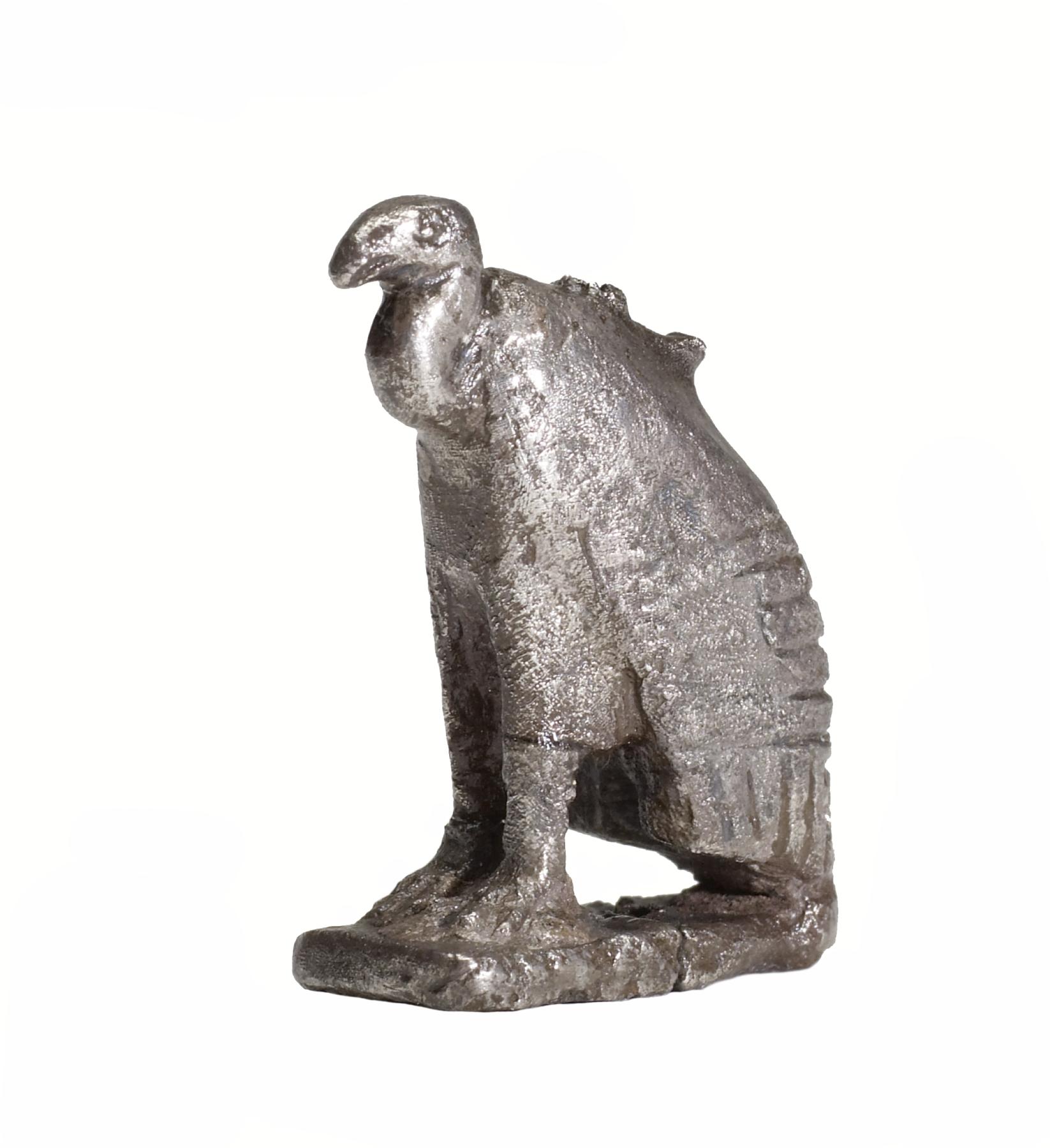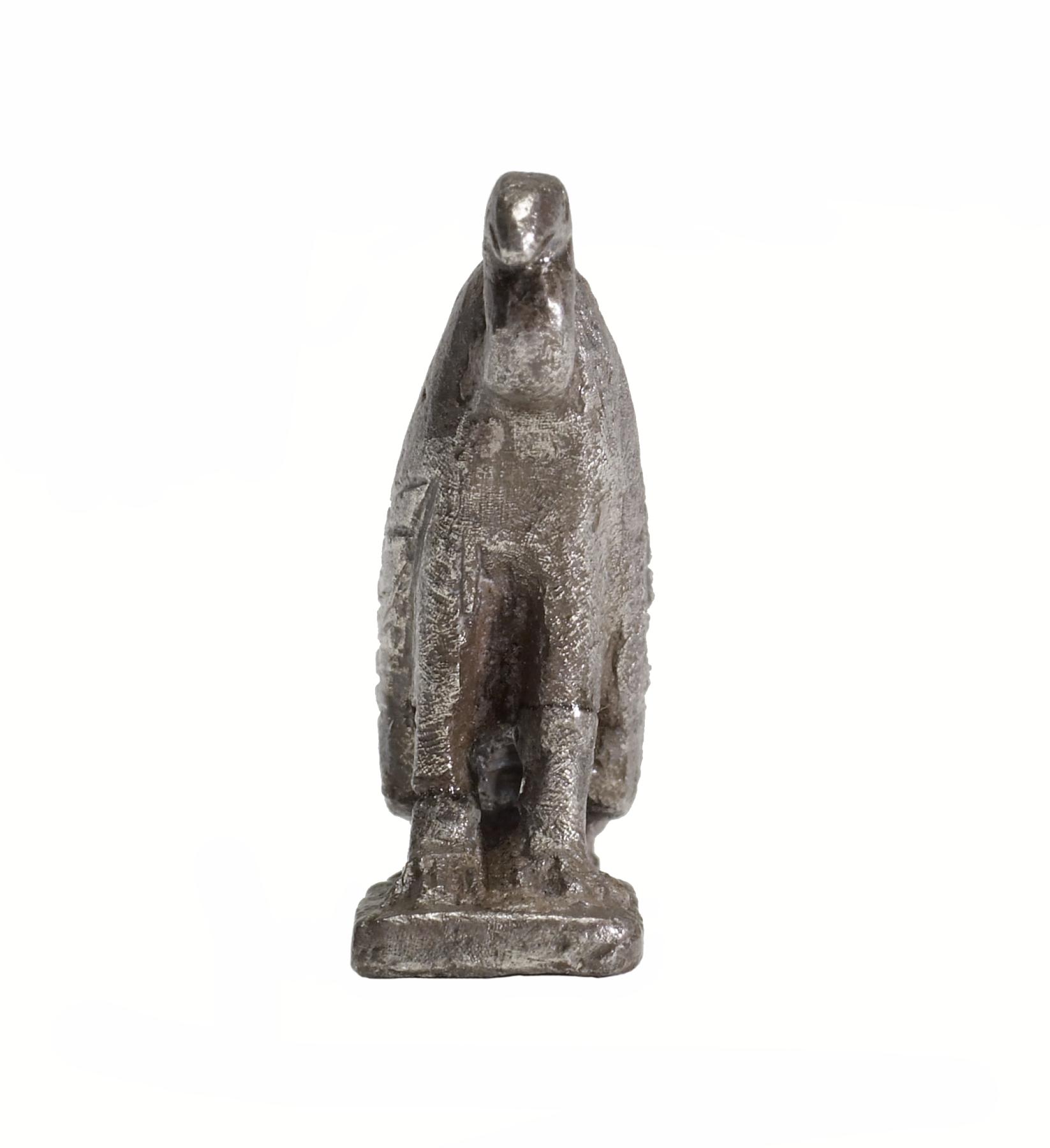Vulture
A cast silver pendant in the shape of a vulture representing the goddess Mut or Nekhbet. Eyes and beak are indicated by incision. The lines marking the lower feathers are carelessly incised. The surface has deteriorated. The suspension loop on the shoulders has broken off.
Provenance
Provenance (from the French provenir, 'to come from/forth') is the chronology of the ownership, custody, or location of a historical object. Learn more about provenance at the Walters.
Dikran Kelekian, New York and Paris [date and mode of acquisition unknown] [said to be from the pyramids in Egypt]; Henry Walters, Baltimore, 1909, by purchase; Walters Art Museum, 1931, by bequest.
Exhibitions
| 2014-2015 | Die Entstehung der Welt. Ägyptens letzter Schöpfungsmythos (The Origin of the World. Egypt’s Last Creation Myth). Roemer- und Pelizaeus- Museum, Hildesheim; Kunsthalle Leoben, Leoben. |
| 1979-1980 | Jewelry - Ancient to Modern. The Walters Art Gallery, Baltimore. |
Conservation
| Date | Description | Narrative |
|---|---|---|
| 10/5/1971 | Treatment | repaired |
| 5/5/1977 | Examination | examined for condition |
| 9/14/2012 | Treatment | Other |
| 9/14/2012 | Treatment | Mount removed for photography |
Geographies
Egypt (Place of Origin)
Measurements
H: 7/8 x W: 5/8 x D: 1/4 in. (2.2 x 1.6 x 0.7 cm); H on mount: 1 1/16 x 13/16 x 1/2 in. (2.7 x 2 x 1.2 cm)
Credit Line
Acquired by Henry Walters, 1909
Location in Museum
Not on view
Accession Number
In libraries, galleries, museums, and archives, an accession number is a unique identifier assigned to each object in the collection.
In libraries, galleries, museums, and archives, an accession number is a unique identifier assigned to each object in the collection.
57.1427










